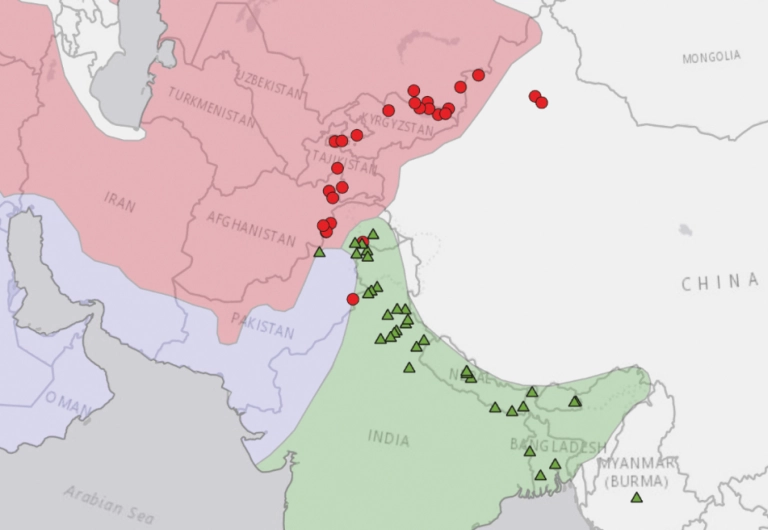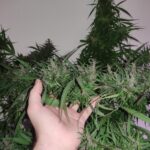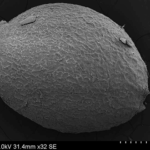Indicas vs Sativas or Central Asian vs South Asian cannabis…
More accurately, the distribution of wild-growing Central and South Asian cannabis populations from whose truly wild ancestors Indicas and Sativas were domesticated, respectively, beginning perhaps 5500 years ago.
Note the capital ‘I’ in Indicas and the capital ‘S’ in Sativas – these are the informal classifications I’m using here, not the formal italicized classifications.
The map is from an essential study by John McPartland and Ernest Small based on analysis of 1100 specimens in 15 herbaria:
Red circles: var. asperrima
Green triangles: var. himalayensis
Red area: Irano-Turanian region
Green area: Indian region
Lilac area: Saharo-Sindian region
Following the great Russian scientist Nikolai Vavilov, McPartland and Small identity two main Centres of Origin for ‘drug-type’ Cannabis:
Central Asia:
var. asperrima = wild-type
var. afghanica = domesticated aka landrace (‘Indicas’)
South Asia:
var. himalayensis = wild-type
var. indica = domesticated aka landrace (‘Sativas’)
The interface between these populations lies between the Indus River watershed (the northwestern border of var. himalayensis) and the Kunar / Chitral River watershed (the southeastern border of var. asperrima).
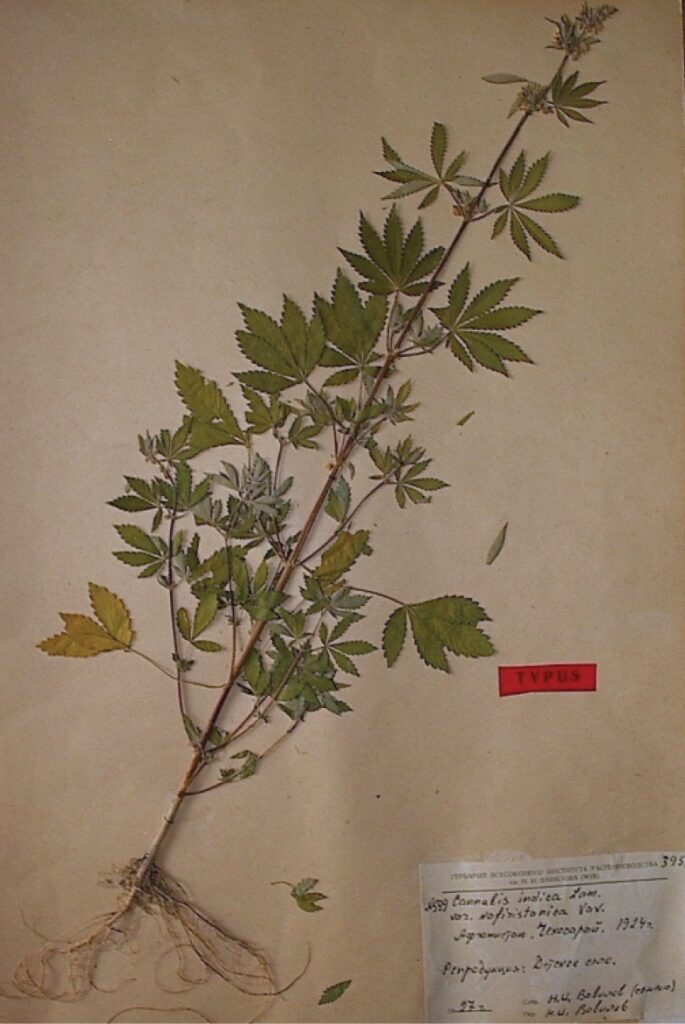
Type specimen for Cannabis sativa subsp. indica var. asperrima (1924)
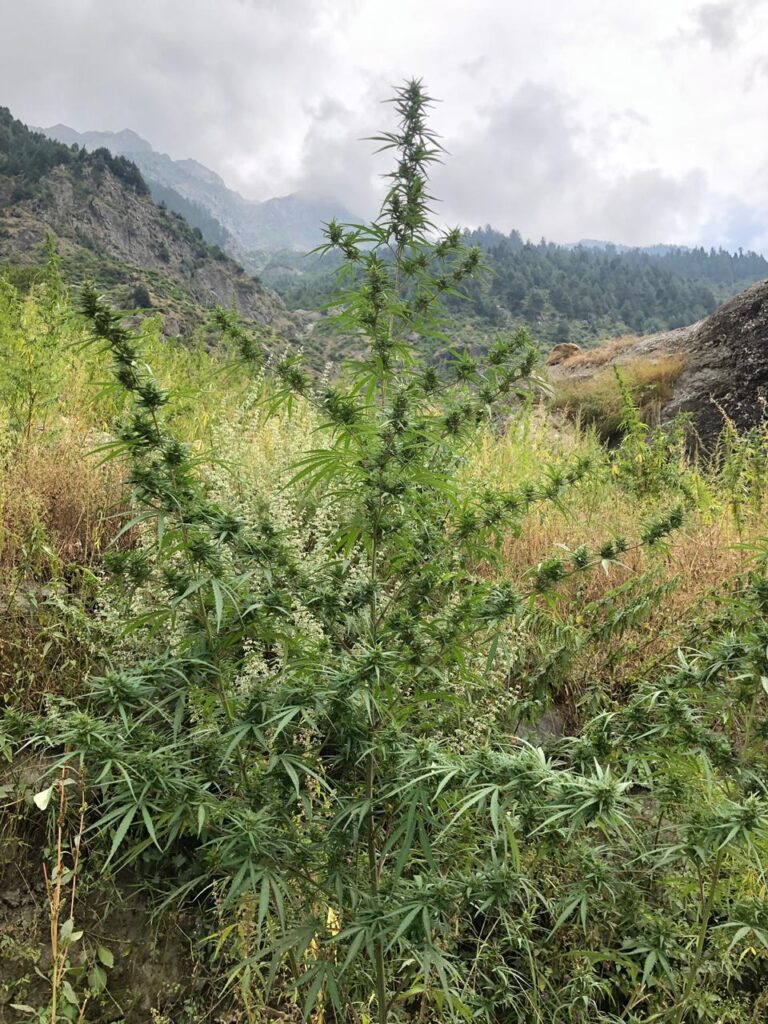
Cannabis sativa subsp. indica var. himalayensis in Kaghan Valley, northern Pakistan by Landrace Genetics (2018)
